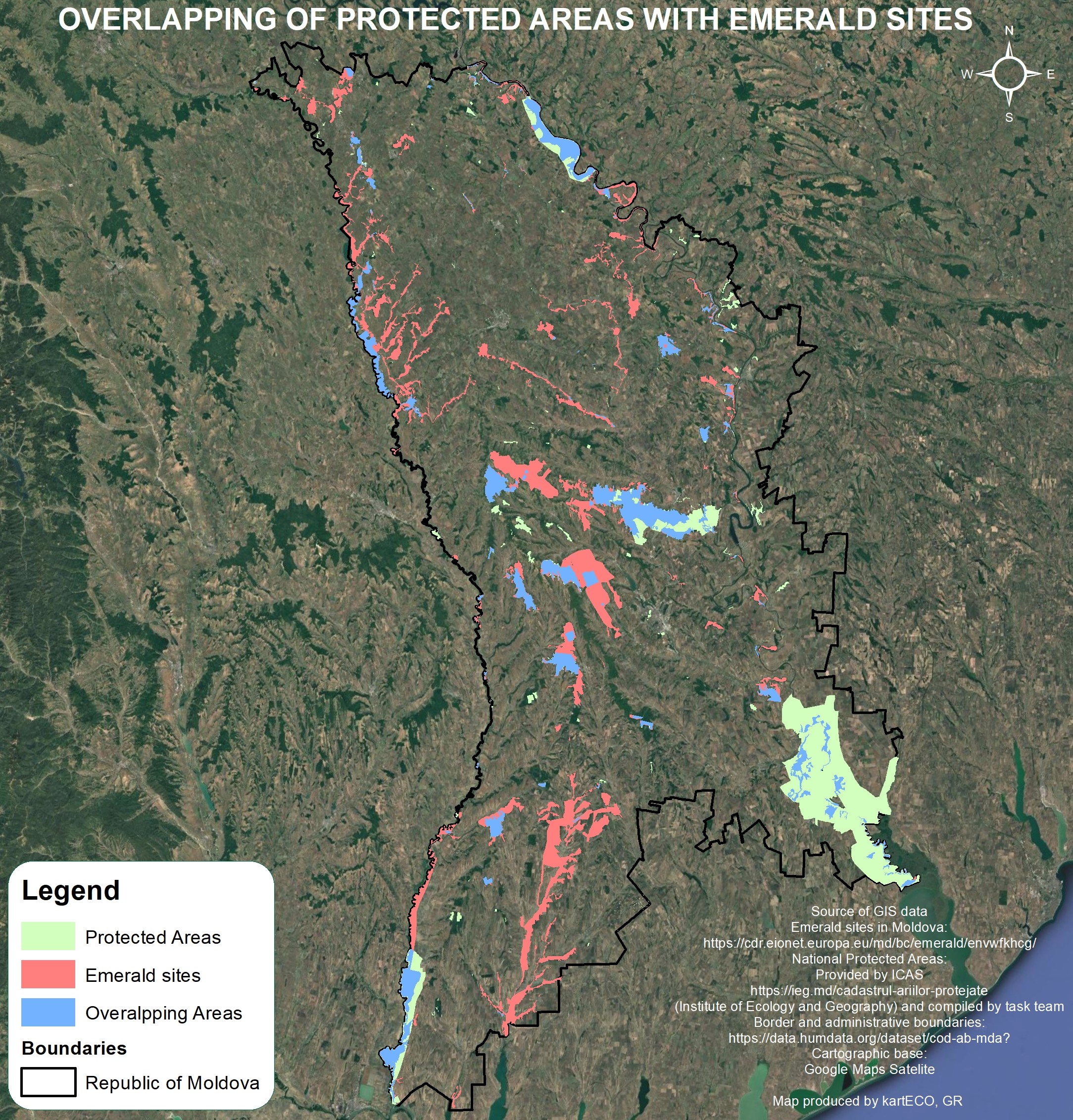Taking important steps towards promoting nature conservation and environmental policy, the stakeholders involved in the Life Renata project have completed the overview study of the Emerald Network of the Republic of Moldova, supporting its alignment with the Bern Convention and EU standards.
The Emerald Network constitutes a European initiative with the objective of conserving critical habitats and species. The Republic of Moldova has 61 approved Emerald Network sites, covering an area of 2,744.6 km², i.e. 8.1% of the total area of the country. The Emerald Network in Moldova was established to protect and conserve 27 habitat types and 161 species (12 plants, 25 invertebrates, 25 invertebrates, 3 amphibians, 3 reptiles, 19 fish, 13 mammals and 86 birds) that are listed in the Annexes to the Bern Convention. However, the most recent biogeographic assessment indicated that the network’s capacity to conserve Bern Convention habitats and species remains inadequate (24.1%).

Figure 1: Statistics regarding achievements of Republic of Moldova as presented by Emerald Barometer (last updated in 2023)
Despite an increase in the number of Emerald sites between 2016 and 2019, the total area of sites decreased by 3%, leaving the country with a relatively low national coverage of 8.1%. In contrast, in most countries in the Emerald Network, the coverage of areas expanded. This stagnation, combined with the relatively low sufficiency index, necessitates two things: a) a review to expand existing sites and/or designate new sites to cover habitats and habitats of species not adequately protected by the network and b) an update of the Emerald descriptive database, the last update of which appears to have been in 2017.
The recent analysis carried out under the Life Renata project focuses on a detailed assessment of the Emerald Network in Moldova, examining at the current situation, but challenges and prospects of the network. Through a multi-faceted approach, the historical development of the network in the country is presented, including initial steps, timelines and maps showing progress.

Figure 2: Current Emerald network evaluation stage for Republic of Moldova, in accordance with Emerald Network constitution process (Current status indicated with blue arrow and next steps in yellow arrow)
In addition to the Emerald sites network data, the analysis also includes the recording and updating of data on both nationally protected areas and internationally recognised sites such as Ramsar sites, UNESCO biosphere reserves and other important conservation areas (IBAs, KBAs, HCVFs). In addition, inconsistencies were identified inconsistencies and errors in the data, through methodical checks and corrected by the project’s scientific team.
A critical component of the analysis entailed the examination of the spatial overlap between Emerald sites and other protected areas. This approach reveals the extent to which Moldova is utilizing its national protected areas and identifies areas that require boundary corrections or modifications and expansions to improve the network.

Figure 3: Proportion of overlapping Emerald sites areas and Protected areas

Figure 4: Emerald sites’ areas spatial overlapping with PAs
The adequacy of existing management plans was also assessed, as well as the extent to which these plans comply with the requirements of the Bern Convention and the EU Nature Directives. The survey also focused on the conservation of species and habitats of European interest, highlighting the gaps that need to be filled to enhance their protection.

Figure 5: Map of Emerald sites correspondence to Bern and EU/Natura 2000 provisions. Emerald sites under conservation degree analysis based on Bern Convention target habitats and/or species (Resolution 4 and 6) are depicted with green color and Emerald sites (including sites with No MPs at all) that do not comply with red color
The study concludes with recommendations for next steps to update the network, enhance biodiversity conservation and move towards Natura 2000 standards. The outcomes of this effort will form the basis for the next phase of the project, strengthening environmental protection in Moldova and aligning the country’s policies with European standards.
The Life Renata project is laying the groundwork for the revision of the Emerald Network, aiming to increase the Sufficiency Index (SI) and improve biodiversity conservation. The creation of a knowledge repository and a GIS spatial database will strengthen the country’s efforts to align with Natura 2000 standards, offering a sustainable future for Moldova’s natural heritage.

